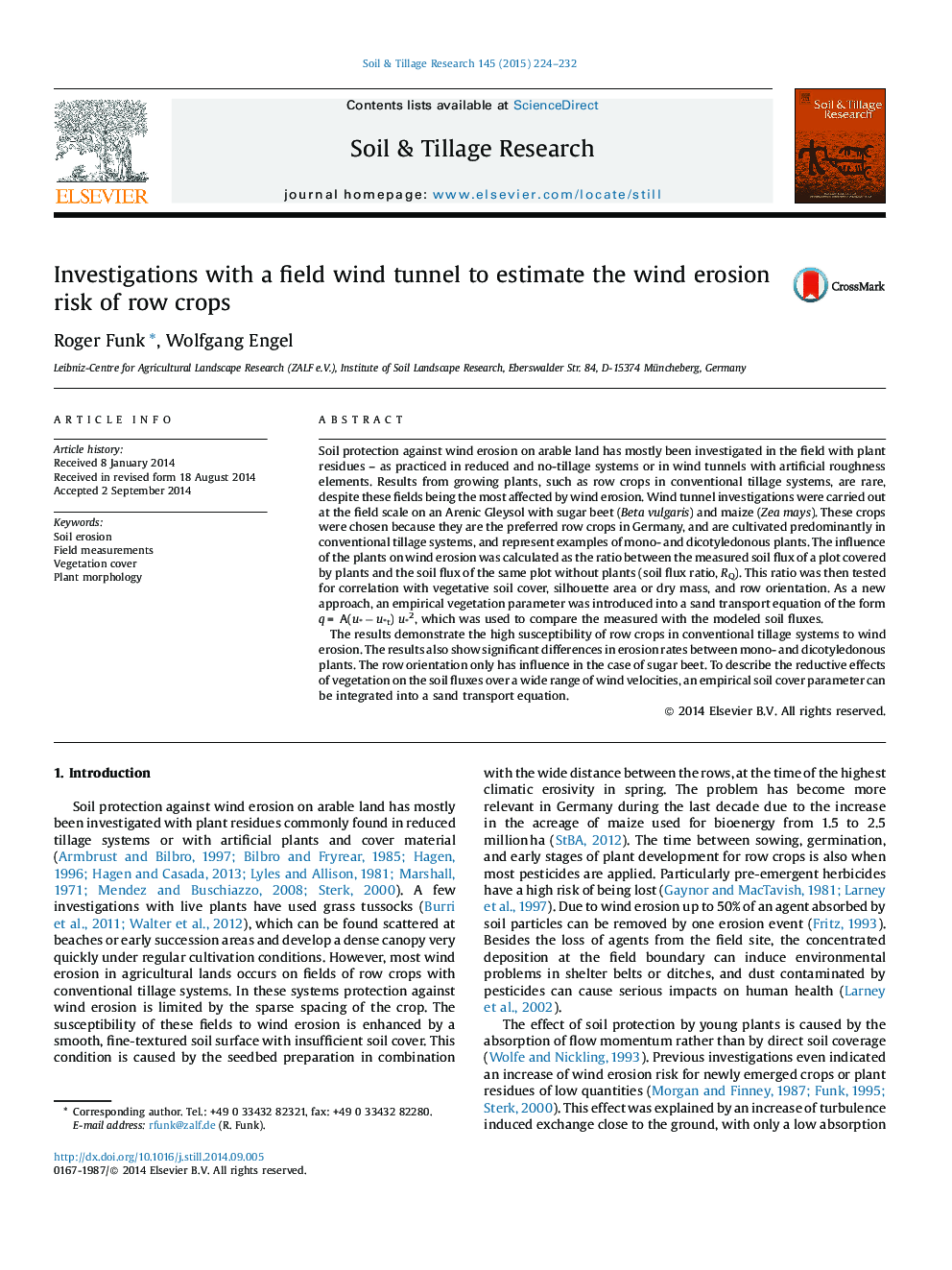| Article ID | Journal | Published Year | Pages | File Type |
|---|---|---|---|---|
| 305657 | Soil and Tillage Research | 2015 | 9 Pages |
•The most common row crops in Germany, maize and sugar beet, were investigated in field experiments with a mobile wind tunnel.•Wind erosion reduction is related to different plant parameters.•Vegetation effects are expressed by relative soil fluxes referred to a bare surface and by an empirical factor in a sand transport equation.
Soil protection against wind erosion on arable land has mostly been investigated in the field with plant residues – as practiced in reduced and no-tillage systems or in wind tunnels with artificial roughness elements. Results from growing plants, such as row crops in conventional tillage systems, are rare, despite these fields being the most affected by wind erosion. Wind tunnel investigations were carried out at the field scale on an Arenic Gleysol with sugar beet (Beta vulgaris) and maize (Zea mays). These crops were chosen because they are the preferred row crops in Germany, and are cultivated predominantly in conventional tillage systems, and represent examples of mono- and dicotyledonous plants. The influence of the plants on wind erosion was calculated as the ratio between the measured soil flux of a plot covered by plants and the soil flux of the same plot without plants (soil flux ratio, RQ). This ratio was then tested for correlation with vegetative soil cover, silhouette area or dry mass, and row orientation. As a new approach, an empirical vegetation parameter was introduced into a sand transport equation of the form q = A(u* − u*t) u*2, which was used to compare the measured with the modeled soil fluxes.The results demonstrate the high susceptibility of row crops in conventional tillage systems to wind erosion. The results also show significant differences in erosion rates between mono- and dicotyledonous plants. The row orientation only has influence in the case of sugar beet. To describe the reductive effects of vegetation on the soil fluxes over a wide range of wind velocities, an empirical soil cover parameter can be integrated into a sand transport equation.
